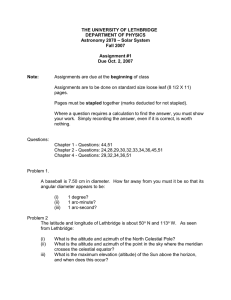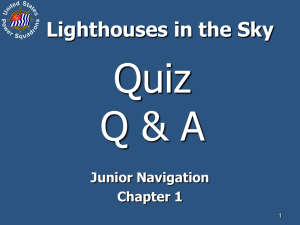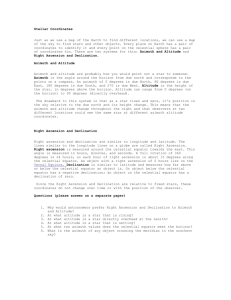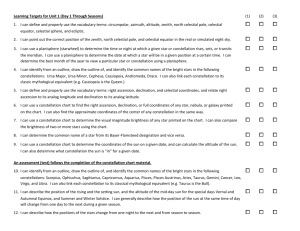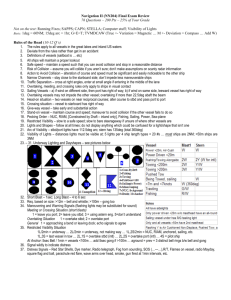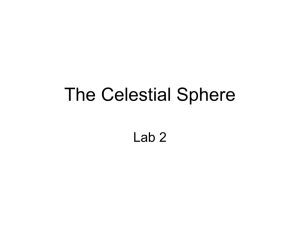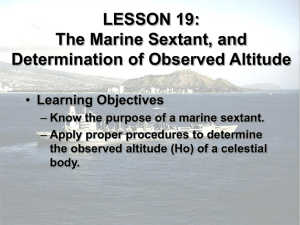Study Guide for 1ST Astronomy Exam
advertisement
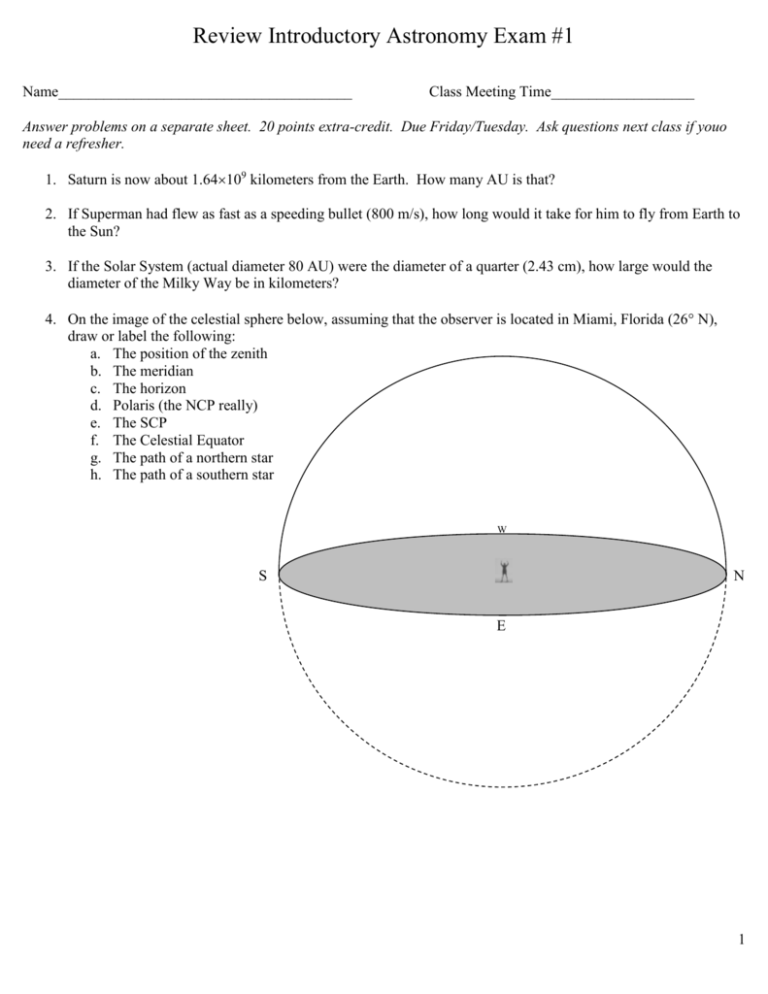
Review Introductory Astronomy Exam #1 Name_______________________________________ Class Meeting Time___________________ Answer problems on a separate sheet. 20 points extra-credit. Due Friday/Tuesday. Ask questions next class if youo need a refresher. 1. Saturn is now about 1.64109 kilometers from the Earth. How many AU is that? 2. If Superman had flew as fast as a speeding bullet (800 m/s), how long would it take for him to fly from Earth to the Sun? 3. If the Solar System (actual diameter 80 AU) were the diameter of a quarter (2.43 cm), how large would the diameter of the Milky Way be in kilometers? 4. On the image of the celestial sphere below, assuming that the observer is located in Miami, Florida (26 N), draw or label the following: a. The position of the zenith b. The meridian c. The horizon d. Polaris (the NCP really) e. The SCP f. The Celestial Equator g. The path of a northern star h. The path of a southern star W S 14 altitude -14 altitude N E 1 5. You are observing from the location on the world map below designated as D. Draw the apparent motion of the stars looking North, East, South and West in the boxes provided below. Include all relevant time and quantitative information. Altitude 60 50 40 30 20 10 North East South West Altitude 60 50 40 30 20 10 2 You are observing from Stockholm, Sweden( 59° N). Answer the following questions. You may use the figure below to help answer the questions. 6. Place the following objects correctly on the celestial sphere drawing to the right and label their altitudes and declinations a. The zenith b. The NCP c. The SCP d. The full extent of the circumpolar region e. The southernmost visible star 7. What would be the maximum altitude of the Celestial Equator? What would its azimuth be at max. altitude? 8. Would a star at declination +70 be visible? If yes what would be its maximum altitude? S N 9. Would a star at declination -50 be visible? If yes what would be its maximum altitude? 10. How long would a star at 0 declination be above the horizon? 3
